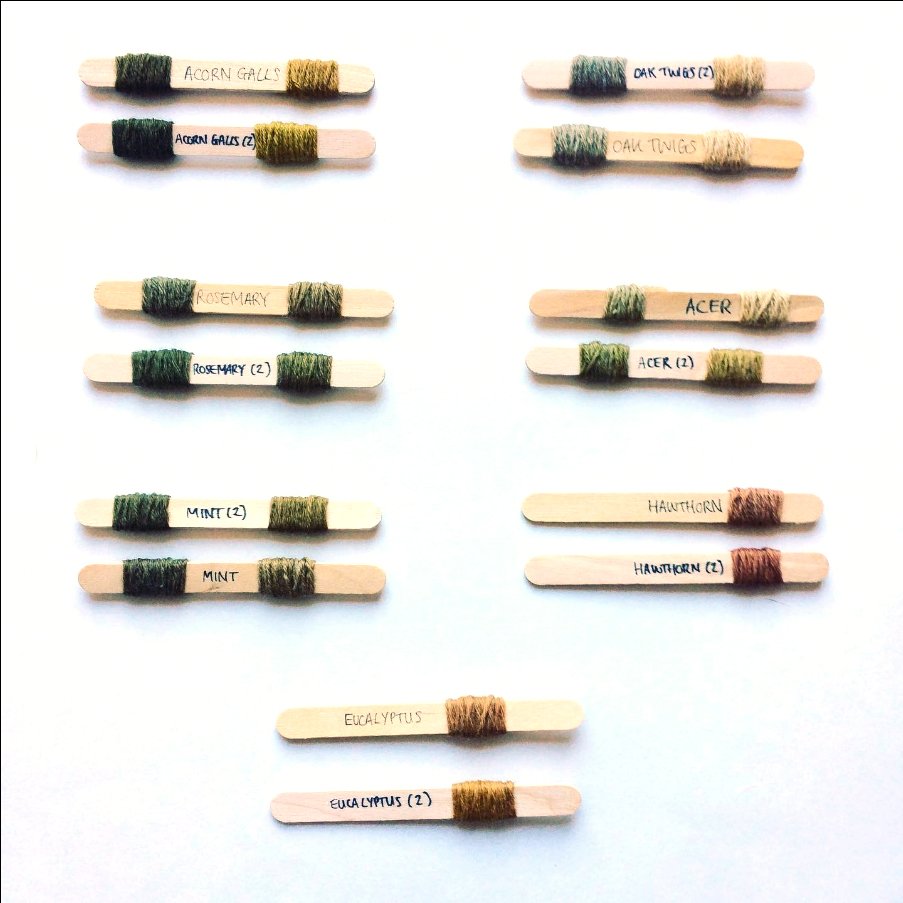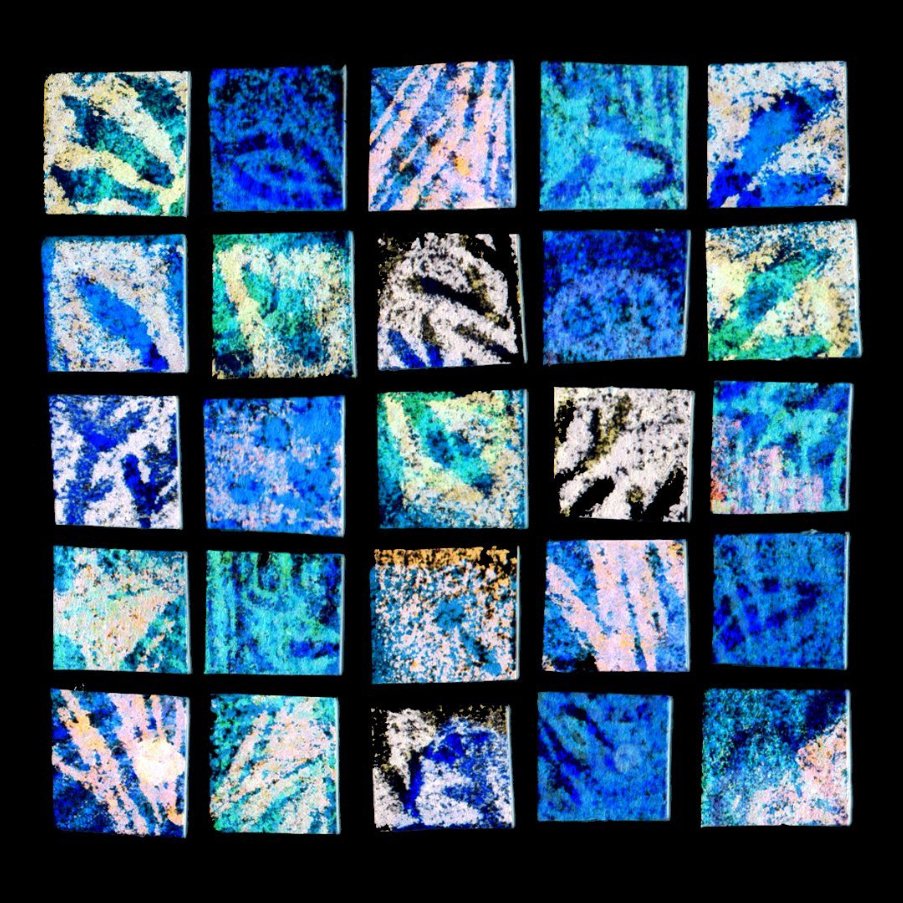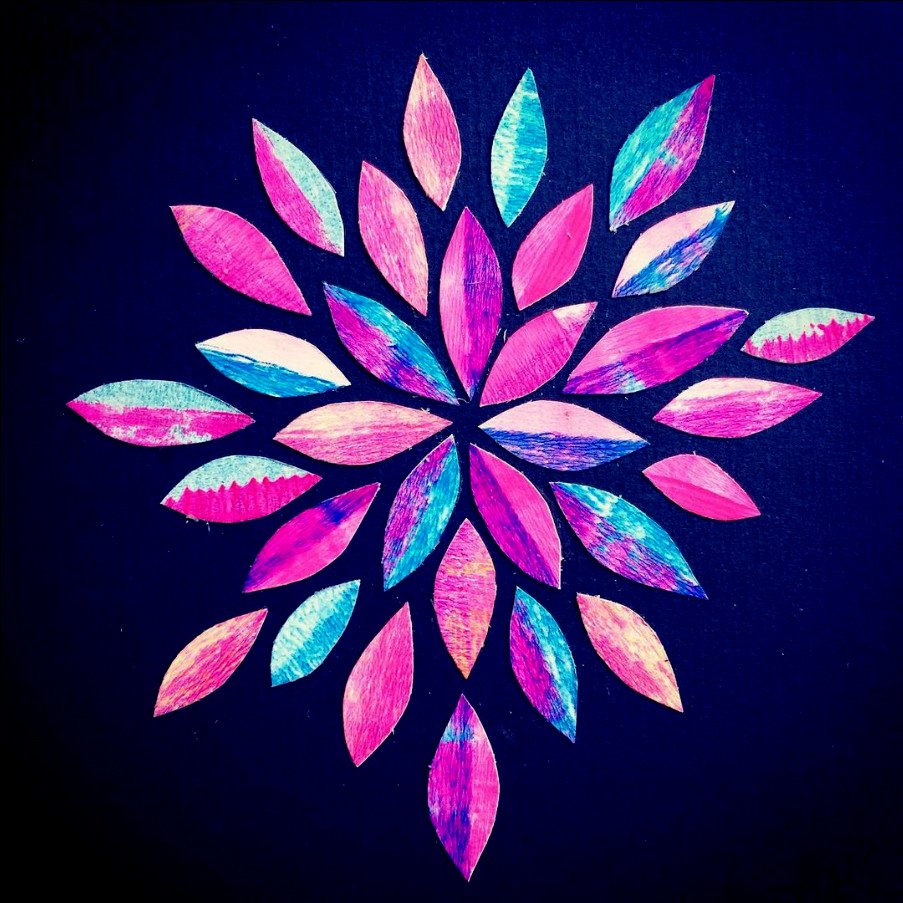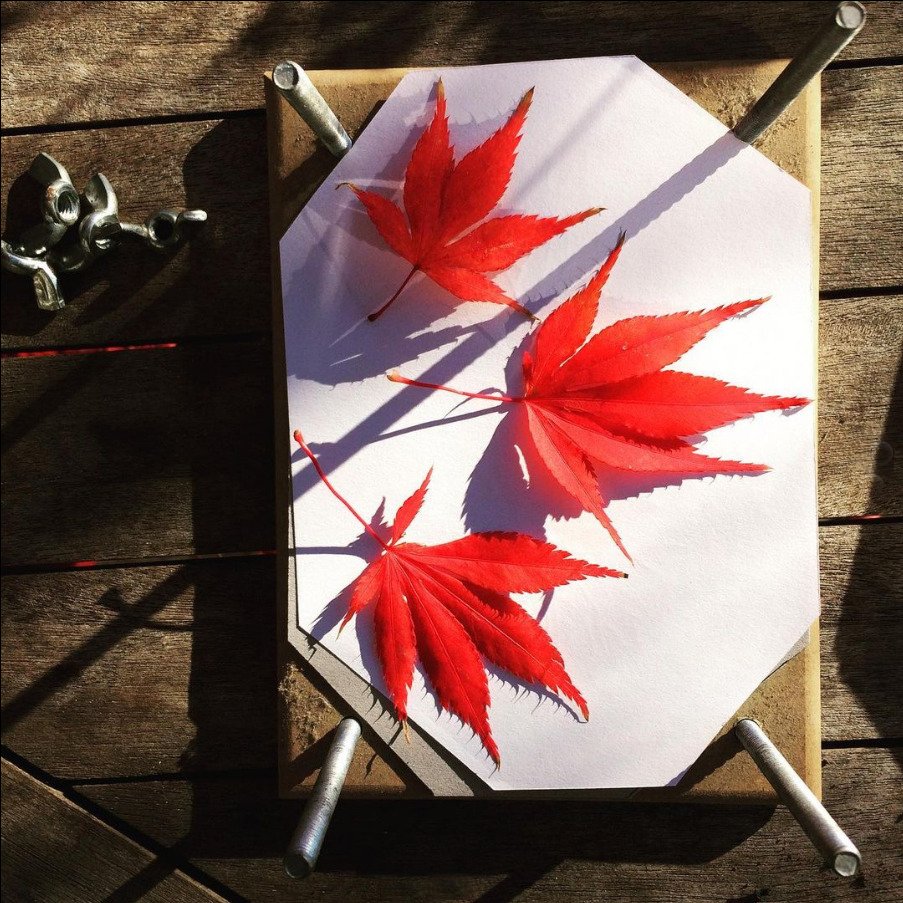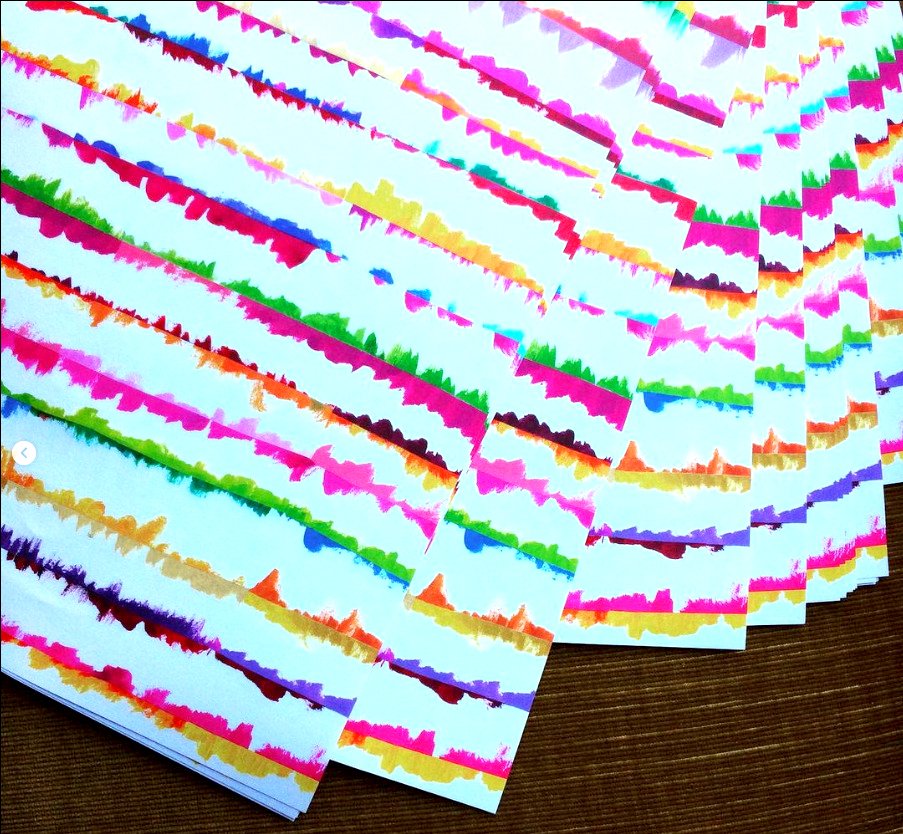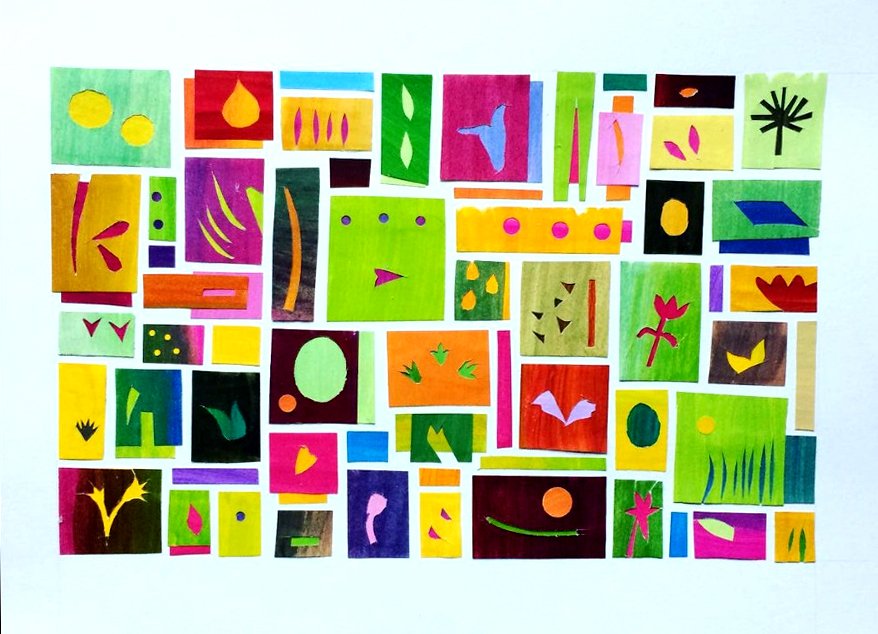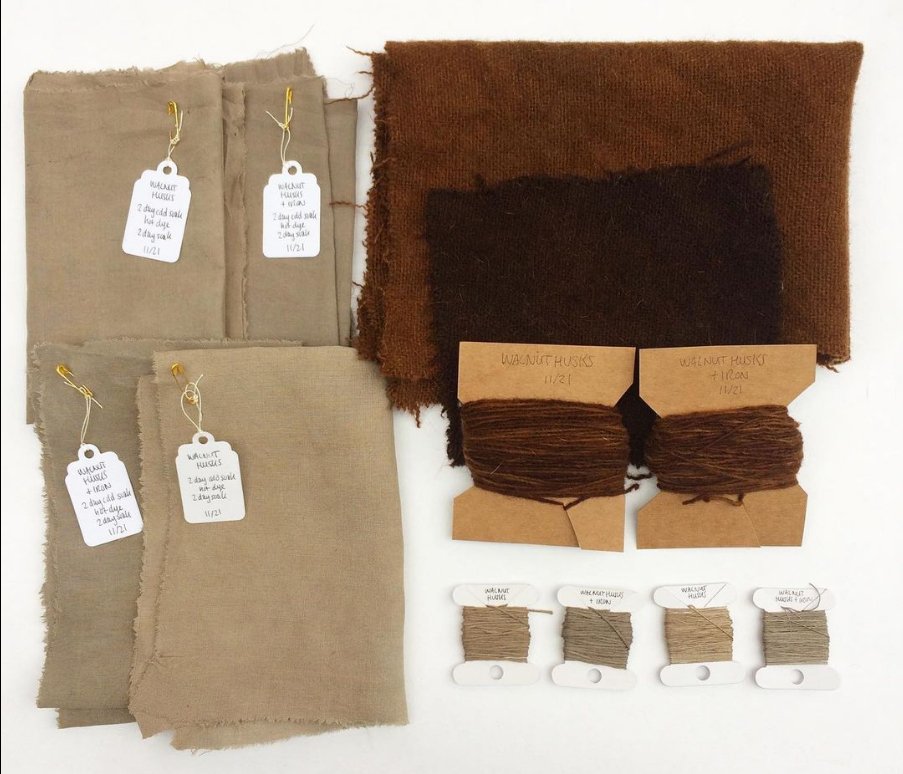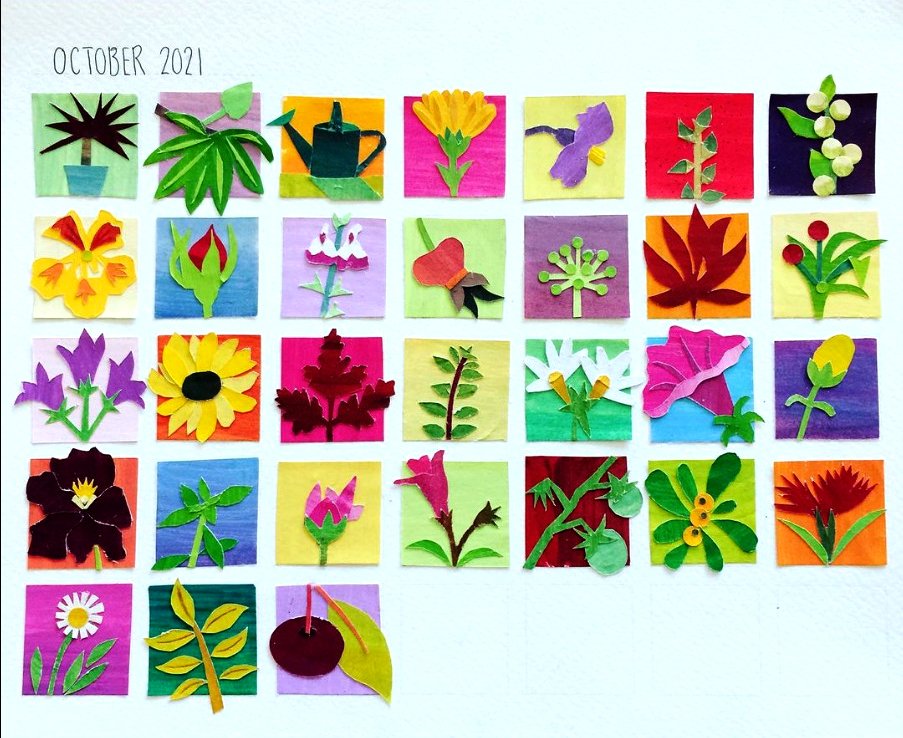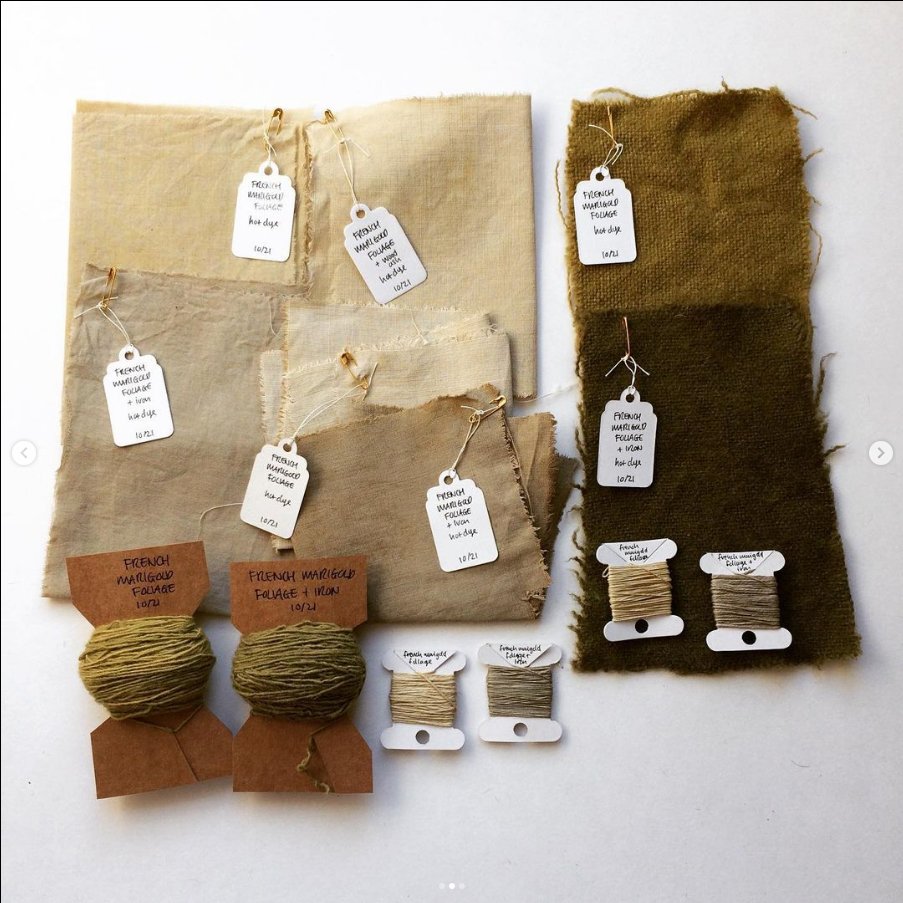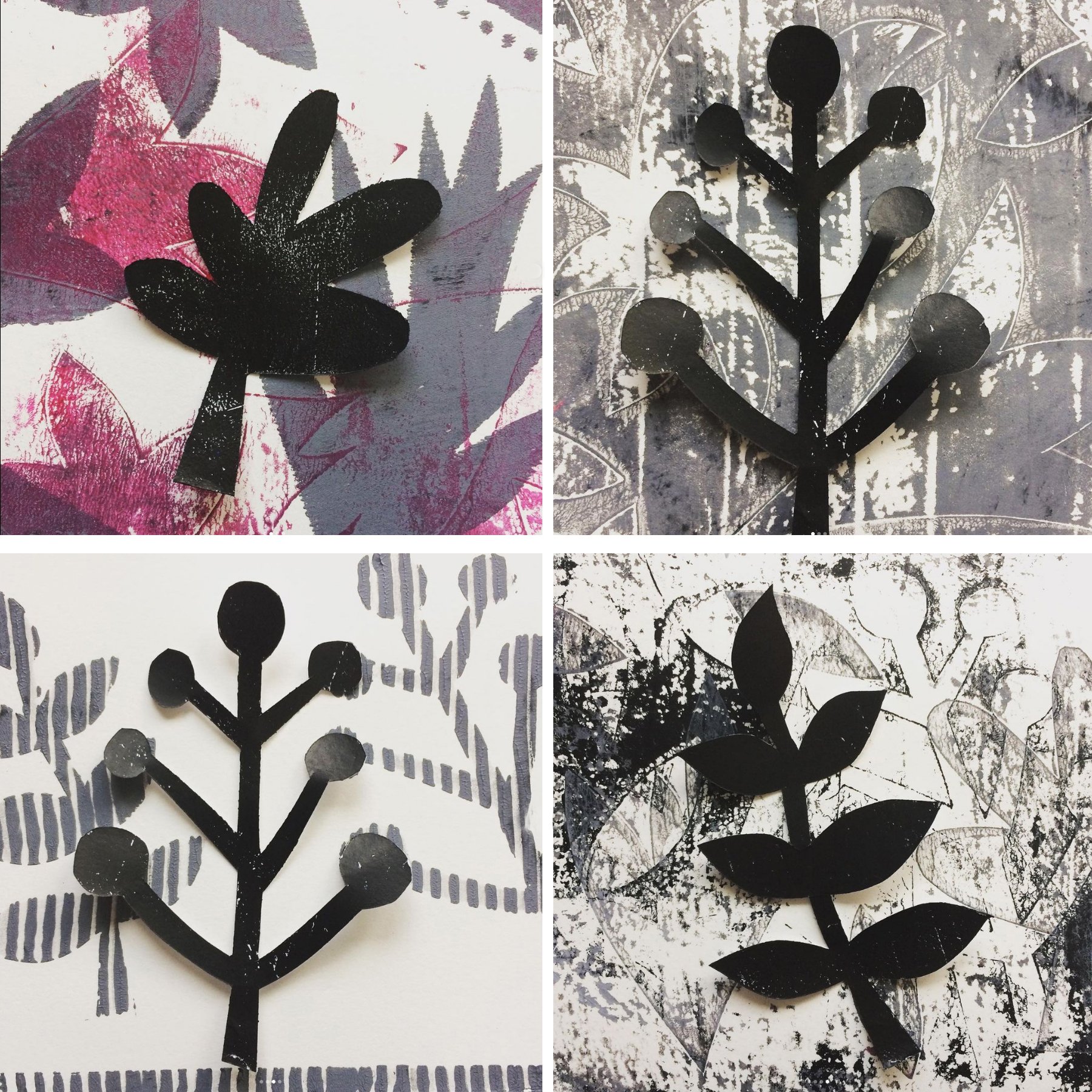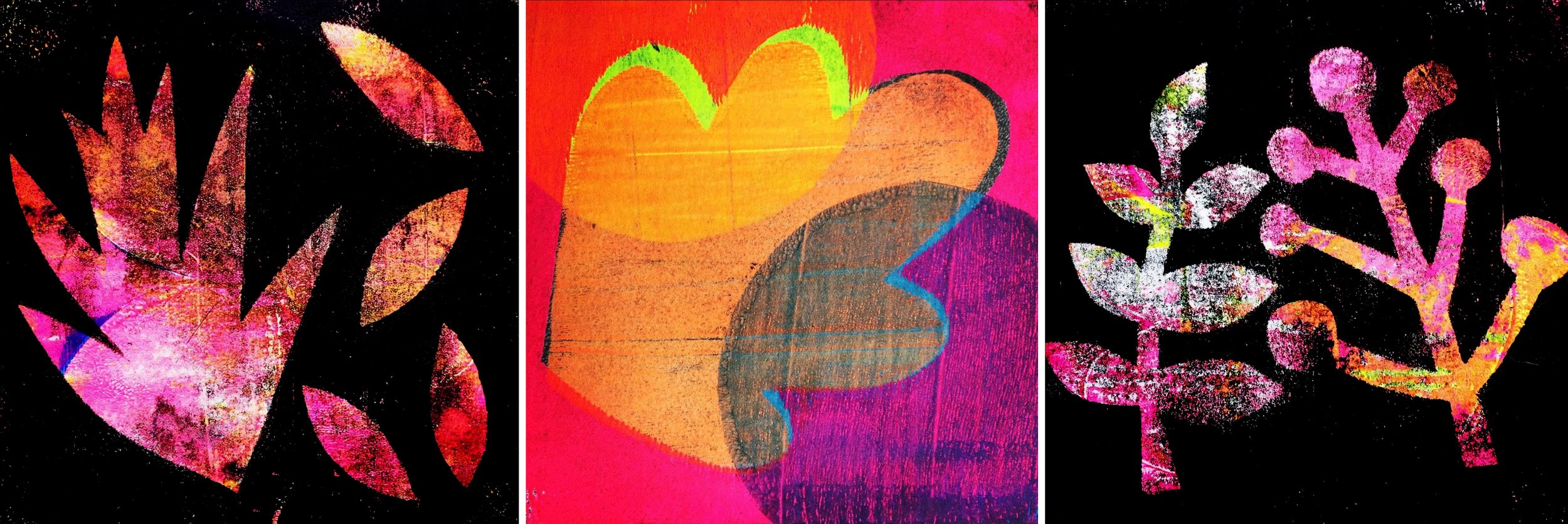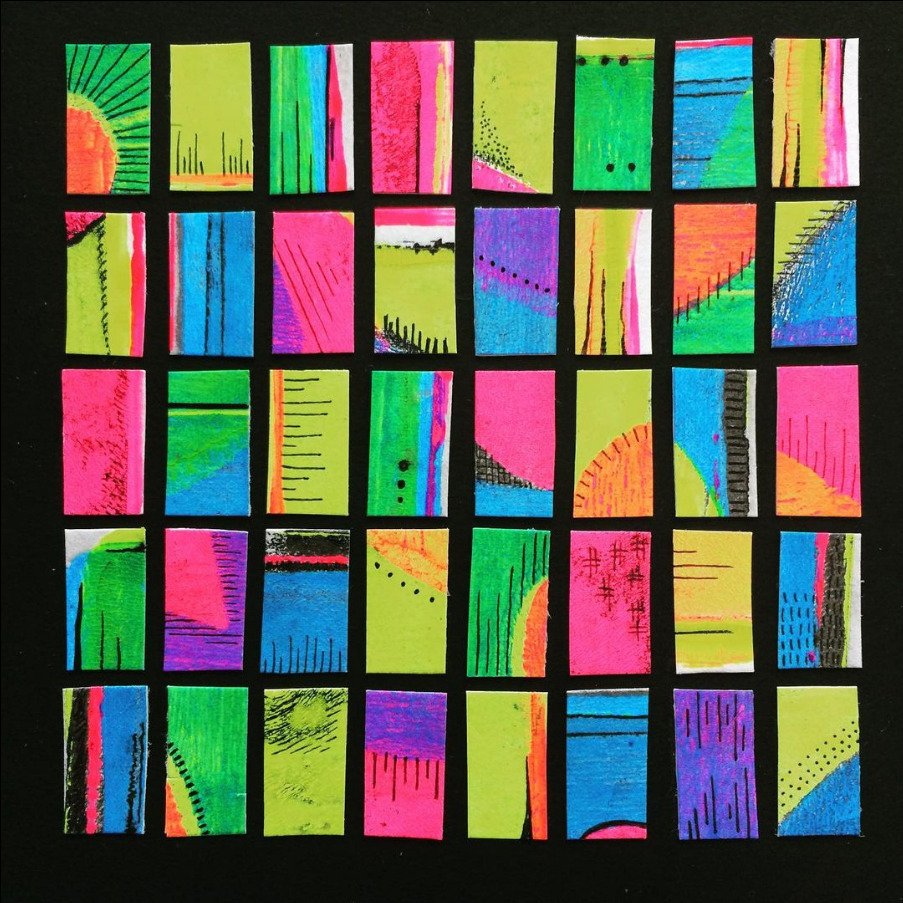And so ends my 2021 Garden Residency... it’s been a diversion, an excuse to experiment, some much needed structure, and license to play. A creative sabbatical. Accompanied throughout by my trusty studio assistant, Otto (a Vizsla of senior years).
One final collage of monoprinting offcuts before the year came to a close. If in doubt, cut out circles and arrange them in a grid. Always a useful creative un-blocker.
My last two dye experiments of the year are out of the dyepot... that makes 55 in total. Shown here is Yarrow (achillea) and I have Teasel drying at the moment. To be honest the colour palettes are very similar. A rather unexceptional end to a year of colour creation, but I’m looking forward to using some of the dyed fabric, yarn and thread from my dye experiments in new work next year.
In a piece of perfect timing, I received some exciting post on the penultimate day of this year-long project. I’m thrilled to bits to have a small piece on my garden residency in the latest Printmaking Today magazine. Many thanks to editor Leonie Bradley for including me in this issue.
My final month of daily drawings... 31 days of (rather splodgy) back-drawn monoprints coloured with natural ink (mostly marigold, black dahlia and oak twigs). As with all of the other eleven sheets, it’s interesting to see the overall effect as they accumulate through the month, rather than focusing on one drawing in particular.
I’m pleased to have completed my year-long challenge of a drawing a day, and I think I may have unintentionally made it into a habit (although I may reduce it to just weekdays as this is easier to build into my work schedule). Here’s to more drawing in 2022!
Amongst many other things, this Garden Residency has been a useful exercise in maintaining a weekly blog entry – based on my many Instagram posts throughout the year. I’ve really appreciated all the words of support, encouragement and feedback – it’s been a good way of feeling more connected during an otherwise isolated year.
I now need to finish recording my work in my journal, and take some time to consolidate and reflect, before working out my next steps. In the meantime, wishing everyone a happy and healthy new year... x









